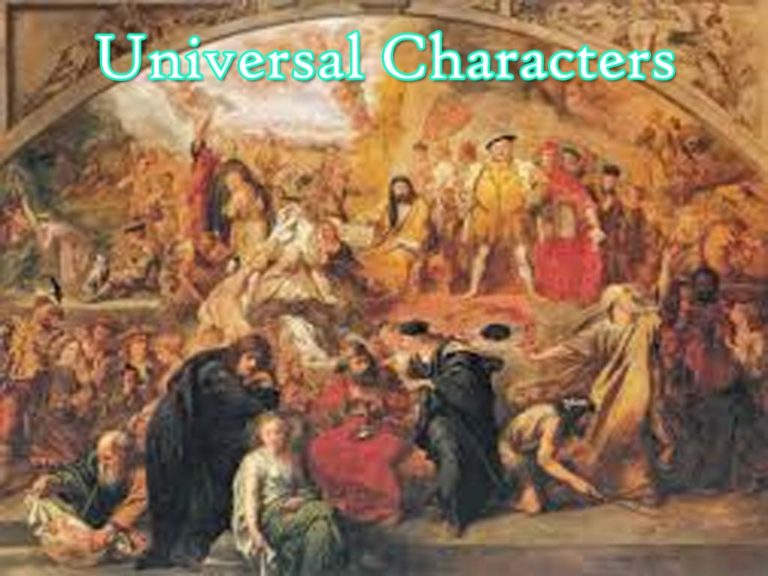

By JH Sayyar
The term Characterization is a literary genre, a short witty sketch on prose of a distinctive type of person. A Greek Philosopher Theophratus in literature first of all used it. He also wrote a book and called it Characters. After this many writers wrote books on characters.
But characters in literature is applied for persons in a dramatic and narrative work including their moral and dispositional qualities which are expressed in dialogue, what they say and in action what they do.
EM Foster has introduced two types of characters in his famous book, The Aspects of Novel: a flat character has a single idea throughout life in a drama or narrative work or in the poetry: a round character is that who changes himself according to situation in practical field. Hut Chaucer has introduced a third character and critics call it the universal character. Shakespeare created round characters and Chaucer created universal characters.
In this respect Chaucer’s art of characterization is unique and sublime but his technique of presenting characters if personal and original. He has succeeded in drawing characters in their natural guise, style, mood, dress and free use of language while going to the Shrine of St Backett.
As one critic has rightly said that the Prologue is a picture gallery. RK Roots says that it is cross-section of the14th century. But Dryden calls it here God’s plenty. It is a concrete fact that every writer does come under his age consciously or unconsciously.
It is the case with Chaucer in the Prologue. He introduced 29 characters in the Prologue under different names. Today we can see all characters in practical field with same qualities described by Chaucer in the Prologue. Allen has rightly said that Chaucer’s art of characterization is a beautiful bled of round, flat and universal characters.
The Wife of Bath and the Monk both are complex characters. The Wife of Bath in spite of being polite and is full of modern etiquette, enjoys sex with different people while going to the Shrine and tells sexy tales to the listeners. She does so even in her old age. As the text shows clearly:
“Of remedied of love she knew per chance
For she kould of that art the olde dance”
On the other hand the Monk is a man of dignity keeps himself away from all types of vulgar people but he enjoys life on finger- tips. He is pleasure seeker, not hypocrite as the text shows clearly about his character
“His bootes souple his horse in a greet estaate
Not certainly he was a fair prelate.”
Along with it he introduces flat characters so that the readers may compare them with the round and complex characters. The Oxford Clerk, The Nun, The Haberdasher, The Dyer, The carpenter, The Weaver and The Cook are flat characters.
Today Chaucer’s universal characters are famous all over the world due to having universality.
Because their traits are universal and for all times The Friar, The Pardoner, The Prioress are common in every country. Further critics divide Chaucer’s characters into different classes for the readers understanding:
1-The Knight, The squire, The Yeoman represents the warlike class.
2-The Doctor, The Man of Law, The Oxford Clerk and Chaucer himself represents the liberal class.
3-The Ploughman, The Miller, The Reeve and The Franklin represent the agricultural class.
4-The Merchant, The sailor both represents the commercial class.
5-The Wife of Bath, the Weaver, the Dyer, The Tapestry Maker represent industrial class.
6The Manciple, The Cook and the Host represent the grocery class.
7-The Parson, The Sommoner represent the secular clergy.
8-The Monk The Prioress, The Priest and the pardoner represent religious class.
To sum up, in the Prologue Chaucer adopts a simple method in his art of characterization in order to show their traits clearly. He makes no exaggeration in it and keeps them away from idealism. He describes his characters physically, mentally, spiritually, psychologically, politically and socially with their natural genetic traits that are unchanged till death.
So we may call it the best art of characterization in English literature. It is free of personal bias and prejudice. He had the seeing eyes, attentive ears, and a keen memory and a personal style to describe them in a natural way. So we can see all the characters even today in our time with the traits described by Chaucer in the Prologue.
Nggak Nyangka! Hidup Gue Berubah Total! Gue bukan siapa-siapa. Cuma anak kos biasa yang kerja serabutan buat nutup biaya hidup… Read More
What is the Main Cause of a Heart Attack? What is its Solution? A heart attack is the blockage of… Read More
In the vast economic arena, one term that often takes center stage, inciting extensive debates and discussions, is the "debt… Read More
De-Dollarization: The Changing Face of Global Finance The financial landscape is in a state of flux, with an intriguing economic… Read More
The curtains closed on a dramatic Bundesliga season with Bayern Munich standing tall once again, clinching their 11th straight title.… Read More
The Unfolding Story of Celine Dion's Health In recent news that has left fans across the globe stunned, iconic singer… Read More
View Comments
He was trying to make it Universal... all people together on a quest...